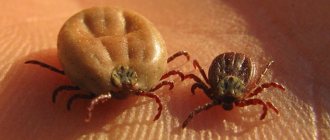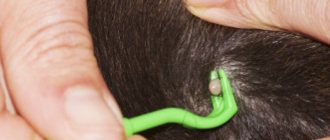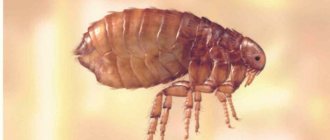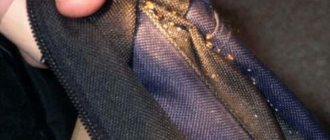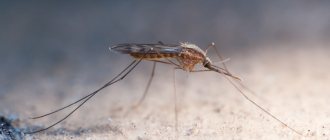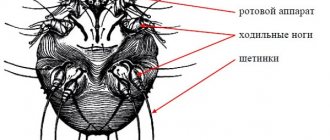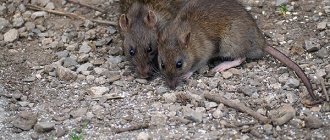General characteristics of rat poisons
Rat poison used to include substances such as arsenic, lead, and strychnine.
Then its production was closed, explaining this as a particular danger to the human body. The next variety was Warfarin, but it was not used for long. The fact is that the rats were able to develop resistance to it, so they had to create a new poison. This is how “Kumatetralil” and “Brodifacum” appeared. Today there are quite a few types of poisonous substances for rats. Conventionally, they can be divided into three groups. The first group includes “Rat” and zinc phosphide. However, their use is quite limited. This is due to the high toxicity of the active substance. Their advantage is that all rats that try the poison die. Moreover, the time required to destroy them is only a few hours. Despite their high toxicity, “Ratsid” and zinc phosphide are still used in cases where other poisons are absolutely powerless. The procedure requires close attention and control.
Strychnine
Another group includes rat poisons of the old generation, the use of which is strictly prohibited. These are strychnine, yellow and white phosphorus, arsenic, lead, thallium sulfate. Even knowing about their increased toxicity, people still occasionally resort to such means. You need to know that the consequences of their exposure can be irreversible, even fatal.
The third group is a new generation of substances that can be bought on the market or in special stores. The main component most often in them are zoocoumarins, which promote poor blood clotting. The effect of such poisons is that a rat or mouse, having tasted the poisonous agent, dies as a result of internal bleeding. Among the poisons of this group, anticoagulants of the first and second generations are distinguished.
First generation anticoagulants include Warfarin, Ratindan, Ethylphenacin, Izoindan, and others. Their peculiarity is that toxic compounds do not accumulate in the body, and after 3-4 days they are almost completely eliminated through the kidneys. The downside of these drugs is that rodents become addicted to them. That is why in some cases they resort to stronger drugs: Brodifacoum, Bromadiolone, Flocumafen, Difenacoum and the like. Their toxicity is significantly higher than that of first-generation anticoagulants, and the exposure time is shorter. At the same time, they are able to accumulate in the body.
Features of the composition
Poison for rats
There are several groups of toxic drugs. The composition of rat poison determines the effect of the drug.
- The first drugs for killing rats were produced based on arsenic, strychnine, lead, yellow or white phosphorus, and thallium sulfate. The active components have a rapid effect, causing terrible food poisoning and severe intoxication. It is enough for an animal to taste the bait to receive a lethal dose. After some time, the production of these types of rat poisons was stopped, citing a serious danger to human health and other animals.
On a note!
Despite the ban from specialists, people continue to use potent substances in their everyday lives to kill rodents. Putting your own health and the lives of those around you at risk.
- The next generation of drugs for killing rats were Brodifacoum, Difenacoum, Flocusafen, Bromadiolone with active ingredients of the same name. Such poisonous drugs include the poison Rat Death. A special place is occupied by the drug Krysid based on zinc phosphide. As well as poisons containing sodium silicofluoride, glyfluoride, and glomurite. The drugs quickly destroy rodents and are not dangerous to humans if the instructions and safety rules are followed.
- Drugs with a cumulative prolonged action are called a new generation of rodent repellents. Rat poison disrupts the functioning of the circulatory system, promotes clotting, and causes internal hemorrhage. Symptoms of intoxication are present, but to a small extent. The active ingredients are zoocoumarins. The most well-known drugs are Ratindal, Warfarin, Izoindan, Ethylphenacin.
On a note!
Rats, when using anticoagulants, do not understand where the danger comes from and continue to eat the bait with poison. After about a week, internal hemorrhage occurs. There is a significant drawback - rodents gradually develop immunity to zoocoumarins.
Threat to humans
Whether rat poison is dangerous to humans depends on several factors. The consequences are different - from mild illness to death. The result is affected by:
- active ingredient of rat poison;
- state of human health;
- age;
- dose of poison entering the body;
- liver activity.
When working with poison, you must follow safety precautions - use rubber gloves, do not smoke, do not eat food, and do not touch your face with your hands. After completing the procedure, throw away the gloves and wash your hands with soap.
Poisoning by rat poison in humans occurs when the poison enters the stomach. Symptoms depend on the action of the active component. Severe intoxication with dizziness, vomiting, diarrhea, loss of consciousness when using a drug with instant action. Slow deterioration of health from anticoagulants.
Poisoning by poison
Rat poison can be poisoned accidentally or intentionally. The first case occurs when small children eat poison, the second occurs when an adult desires to commit suicide. The lethal dose when using immediate-acting drugs is 300 mg per 1 kg of body weight, prolonged - about 60 mg.
Important!
The liver can handle a small dose of poison if it accidentally enters the stomach. The organ removes toxins, breaks down dangerous compounds, and produces substances to counterbalance anticoagulants. If there are liver diseases, the body is weakened, the consequences are tragic.
The likelihood of death increases when using prohibited first-generation drugs and non-compliance with safety rules. Rat poison must be placed in places that are difficult for small children and pets to reach. To reduce the risk of poisoning to a minimum, it is recommended to call specialized services to exterminate rats.
Types of toxic substances
To combat rodents, the chemical industry offers pesticides, colloquially called “rat poison.” These substances are available to a wide range of buyers; they can be purchased freely in many hardware stores.
The most popular types of rodenticides are:
- "Ratsid." The main active ingredients are zinc phosphide and naphthylthiocarbamide. These products are highly toxic; rodents die a few hours after eating the bait. "Krysid" is used only after parasites have become accustomed to poisons of other groups and under strict control.
- Rodenticides with zoocoumarins. These substances affect blood clotting and cause internal bleeding in mammals.
- 1st generation anticoagulants: Izoindan, Ratindan, Ethylphenacin, Warfarin. They act slowly, symptoms of poisoning increase over 4-5 days, and after several generations rodents may develop addiction.
- Anticoagulants of the 2nd generation - Bromadiolone, Brodifacoum, Flocumafen - act faster, have a cumulative effect (after entering the body they are not excreted by the kidneys), and are more toxic.
Currently, the following are officially prohibited for use:
- thallium sulfate,
- compounds of lead and arsenic,
- phosphorus - yellow or white - strychnine.
However, these pesticides are still independently used by people to control rodents, despite the ban.
When is it possible for a person to be poisoned by rat poison?
Mouse poison is dangerous primarily for children, who may try it simply out of curiosity. In addition, they may play with the poison they find and then accidentally introduce it into their mouths through unwashed hands. The greatest danger for poisoning is represented by places where deratization is periodically carried out:
- Warehouses;
- Basements, attics, entrances of residential buildings;
- Country houses, garden plots;
- Preschool and educational institutions;
- Catering and food industry enterprises;
- Treatment and prevention institutions.
Poisons for rats and mice are used for suicidal purposes or as murder weapons quite rarely. This is due to the fact that the dose of the active component in the finished poison is minimal, because it is selected for small rodents, and not for people.
Peculiarities!
Typically, the concentration of poison in rodenticide does not exceed 2%. The rest comes from bait - grain, lard, cereals.
Mouse poison, as a rule, is sold ready-made - along with bait - in briquettes or in bulk. To receive a lethal dose, a person will have to eat about 150 g of this product. Highly toxic toxic substances like arsenic and ratsid, which pose a mortal danger to humans, are now practically not used.
Video “The effect of poison on humans”
From the video you will learn how poison acts on the human body.
Drugs included in rat poison
Rodenticides, or rat poisons, are a group of substances with varying degrees of toxicity and principles of action. Based on their chemical structure, the following categories are distinguished:
Preparations of inorganic origin. The best known of these is zinc phosphide. When in contact with acids, it forms poisonous phosphine gas, which causes suffocation in the rodent. It enters the blood through the capillaries of the lungs, causing paralysis of the nervous system and disrupting metabolic processes. Zinc phosphide is characterized by a rapid and also extremely acute effect on the body.
Preparations of organic origin. They have a chronic effect, accumulating in the tissues of the animal and slowly destroying the body from the inside.
Rodenticides of organic origin:
Anticoagulants block thrombin, causing blood clotting disorders and causing bleeding of internal organs. There are first-generation anticoagulant drugs - “Izoindan”, “Ethylphenacin”, “Warfarin”, which are characterized by a lower degree of toxicity, and modern analogues - “Difenacum”, “Brodifacum”, “Flocumafen”.
Highly toxic rat poisons can be used for deratization, including mixtures of lead and arsenic, strychnine, white and yellow phosphorus, and thallium sulfate.
The forms of preparations can be different - granules, blocks, briquettes, gels or powders. They are available ready-made or require further mixing with bait. Gray rats are smart and cunning creatures, so several methods are used to completely destroy them.
The lethal dose of rat poison depends on both the type and form of the drug. For example, the common “Warfarin” is fatal if only 60 mg is ingested; less con will cause the same effects at 300 mg. Death occurs due to profuse, continuous hemorrhages.
Types of rat poison and its effect on the human body
Rodenticides are produced in several versions containing active components with different mechanisms of action:
- Highly toxic poisons that are currently prohibited for use are arsenic, white and yellow phosphorus, thallium sulfide, lead. They cause rapid death of rodents, but are equally dangerous to humans. For serious intoxication, it is enough to receive a dose of poison through damaged skin or mucous membranes or by inhaling its particles.
- Preparations that are used to a limited extent for deratization due to an increased level of toxicity are zinc phosphide and naphthylthiourea (ratside). They are used only when zoocoumarins are ineffective.
- Zookoumarins are chemicals based on blood thinners that cause fatal bleeding in rodents. Depending on their chemical properties, they are divided into 2 groups:
- I generation of anticoagulant drugs (ethylphenacin, warfarin, isoindan, ratindan), which begin to act late and are quickly eliminated through the kidneys and digestive tract, and therefore are often ineffective. Moreover, many rodents have acquired resistance to such poisons over time.
- II generation of anticoagulant substances (brodifacoum, bromadiolone, flocumafen, difenacoum), which accumulate in the body, leading to the death of mice within 2-4 days. They exhibit an effect more slowly than the rodenticides of the first two groups, but are less dangerous to others and are quite effective. These products are easy to find on the market, and they are now most often used to bait rodents.
Rat poison - what is it and where is it used?
The variety of rat poisons is great, but all of them are created by man in order to get rid of rats and mice, and belong to the group of pesticides. The following types of this toxic substance are distinguished:
- highly toxic compounds (arsenic, various types of phosphorus, strychnine, etc.) are almost never used, since there is a possibility of human poisoning,
- zinc phosphide and ratsid - highly toxic poisons that can lead to the death of rodents a few hours after eating the bait, are produced and sold in very limited quantities,
- drugs that impair the blood clotting process are widely available on the market and are divided into two different generations (the first generation of poisons is more dangerous than the second).
The lethal dose of rat poison for humans varies depending on the type.
For example, 55-60 mg of Varvarin per 1 kg is enough for death to occur, but more Brodifactum will be required: about 300 mg per 1 kg of body weight.
According to ICD-10 or the international classification, poisoning with rat poisons, like intoxication with other pesticides, is coded X48.
The first signs of intoxication
The initial signs of poisoning usually make themselves felt 3 days after contact with rat poison, but if the accepted concentration of the pesticide is too high, they may appear earlier. The main symptoms that attract attention:
- Dizziness, loss of coordination of movements, feeling of confusion in the head;
- Intense headaches, almost not relieved by analgesics;
- Nausea, vomiting, loss of appetite;
- Nasal, gastrointestinal, uterine bleeding, increased bleeding of gums, bleeding in the urine;
- The appearance of bruises on the skin for no apparent reason;
- Lethargy, drowsiness, lethargy;
- Joint and muscle pain, general weakness;
- Dilated pupils, blurred vision;
- Increased heart rate and shortness of breath;
- Hearing loss, tinnitus.
The severity of symptoms depends on the amount of poison eaten. If a small amount of poison enters the body, then all manifestations will be minimal and will go away spontaneously. At the same time, a person does not even always understand what causes the malaise.
Note!
Intoxication is most severe in patients with chronic pathology of the liver and kidneys, who cannot fully neutralize and remove toxins from the body.
Symptoms of poisoning
Signs of rat poison poisoning:
- intense headache;
- pallor of the mucous membranes and skin;
- nose bleed;
- bleeding from the gums;
- the appearance of blood in the urine (hematuria);
- gastrointestinal bleeding, which is manifested by vomiting “coffee grounds”, black tarry stools (with severe bleeding, there may be an admixture of fresh blood in the stool and vomit);
- tachycardia;
- decreased blood pressure;
- dizziness;
- severe weakness;
- apathy;
- lack of appetite.
The more severe the poisoning, the more pronounced its symptoms will be.
Source: depositphotos.com
Symptoms
Symptoms of poisoning do not appear immediately: several hours or even days may pass. The poison acts in such a way that the body stops producing vitamin K. It is necessary for blood clotting.
If it is not enough, then the person has bleeding from the nose or it appears during urination. Symptoms of rat poison poisoning are as follows.
- The victim has a severe headache, which is called toxic. The stronger it is, the greater the amount of poison that enters the human body.
- Blood flows from the nose, bleeding gums.
- Blood appeared in the urine.
- The person feels dizzy, weak, and lethargic.
- The victim looks pale and tired.
The poison acts in such a way that blood clotting is reduced
What is butyrate
Sodium butyrate is a synthetic compound from the GHB group.
. In the circles of drug addicts, the drug is known under the names “Ksyukha”, “but”, “oksik”, “traffic jams”, etc.
Normally, a small amount of gamma-hydroxybutyric acid is synthesized in the human body independently, after which it is transformed into an inhibitory neurotransmitter
and creates conditions for the release of dopamine. A similar effect is achieved after using butyrate, but here it depends on the size of the dose taken.
First aid for rat poisoning
Having received information that a person has eaten rat poison, you should immediately call an ambulance, regardless of whether you managed to extract it yourself. Before the doctor arrives, it is necessary to take a number of measures to reduce the toxic effects.
First of all, the victim should be asked to drink three liters of water to vomit in order to get rid of the poison. This action helps prevent the absorption of anticoagulants and their movement throughout the body.
Without fail, after gastric lavage, the patient will need to take activated carbon or another sorbent. Then drink a saline laxative to get rid of toxic substances inside the body as quickly as possible.
The patient should not eat food under any circumstances. It is strictly forbidden to sleep until the doctors arrive. Outside observers will be required to stir the victim so that he does not fall asleep.
If rodenticide gets on the patient's skin, immediately wash it off with warm water and soap. If itching occurs on the skin, consult a specialist. If the poison gets on the mucous membranes of the eyes and mouth, rinse thoroughly under running water. If your eyes become red or burning, do not delay visiting an ophthalmologist.
How drug addicts use the composition
The narcotic is produced in artisanal conditions. This involves the use of various industrial solvents. The following signs indicate that the resulting mixture is more or less high quality - it looks like small crystals that dissolve well in water and have a slightly salty taste. The drug can also be found in liquid form. Then visually it is almost impossible to distinguish it from ordinary water.
If the drug has a pungent odor
, which means it was made from toxic substances. However, it cannot be otherwise.
Most often, drug addicts take sodium butyrate orally. It is absorbed quite quickly from the gastrointestinal tract
and spreads through the bloodstream throughout the body, reaching the brain. It is dangerous to administer the solution intravenously, since the “arrival” may be accompanied by loss of consciousness and convulsions.
Examination and treatment in hospital
To eliminate the consequences of rat poisoning in the hospital, the victim will be prescribed a number of procedures:
- wash the stomach and intestines;
- they will introduce an antidote - vitamin K, which is responsible for blood clotting;
- will provide maintenance therapy to help restore liver function;
- If necessary, a plasma transfusion will be performed to improve blood clotting.
The duration of treatment for poisoning depends on the severity of rat poisoning. It is determined by conducting a blood test to assess coagulability according to Sukharev. On average, taking vitamin K to fully restore the prothrombin index lasts from 15 to 30 days. During treatment, it is recommended to avoid intense physical activity and get more rest.
What is strychnine
Strychnine is an alkaloid found in the seeds of the tropical chilibuha tree. This substance can also be a medicine that brings a person back to life or a poison that causes a person to stop breathing and die.
Strychnine poisoning is a common occurrence in animals, as it is used as a special poisonous substance in the form of baits. All types of animals (especially dogs and cats) are highly sensitive to it. May accidentally enter human food.
To have an idea of how strychnine works, let's talk about dosages. If its doses are small, then it is used as a medicine. Strychnine nitrate, dry chilibuha extract and chilibukha tincture act as this. Their therapeutic doses: from 0.0005 to 0.005 grams, which corresponds to 5–15 drops of tincture. The effect of their use is analeptic, that is, revitalizing. These drugs are psychostimulants; they will tone all systems in the body:
- will make the stomach and intestines work faster;
- normalize digestion by improving the functioning of the glands and eliminating fermentation processes;
- eliminate urinary incontinence in children by increasing the tone of the bladder sphincter;
- will sharpen hearing, smell, vision, especially color perception;
- will increase blood pressure, increase heart function, and increase breathing rate;
- will help to recover from chronic alcoholism, drug addiction;
- will remove muscle weakness, paresis and paralysis;
- will help with functional impotence.
It should be remembered: you can be poisoned by strychnine when long-term therapeutic doses of a drug based on it are used. It is slowly eliminated from the body, accumulates and strychnine poisoning occurs.
Complications of rat poisoning
Even after discharge from the hospital, it is important to monitor the well-being of the victim after poisoning with rat poison, especially if it is a small child. If the dangerous symptoms of poisoning were ignored and help was not provided in a timely manner, unpleasant complications are possible. Possible consequences of rat poisoning include various disorders of the kidneys and liver.
The most terrible consequences of poisoning with rat poison are acquired hemophilia (chronic insufficiency of the prothrombin index). It can be expressed in systematic bleeding from the nose, gums, mucous membranes, characterized by increased duration. Internal hemorrhages are also common, posing a serious threat to human health. To improve a patient after poisoning with rat poison, he is prescribed a course of vitamin K for a year after the event.
Symptoms of rat poisoning in humans
When a person is poisoned with rat poison, symptoms do not develop immediately, but 3-4 days after the poison enters the body. The disease is characterized by a chronic course. In rare cases, due to taking a large dose of a potent drug, it is possible that signs of a bleeding disorder may develop after 12–24 hours.
The victims noted:
- weakness,
- nausea, loss of appetite,
- headache,
- pallor,
- the appearance of bleeding gums, hemorrhages on the mucous membranes,
- Less commonly, symptoms of rat poison poisoning in humans include diarrhea, blood in the feces, nosebleeds, abdominal pain, and the appearance of bloody spots on the body.
How to prevent poisoning
If you fight gray rats and mice on your own, follow the safety rules. Be sure to wash your hands after performing work, or better yet, use disposable protective equipment. If you have small children in your apartment or house, try to protect them from the poison.
When choosing a means for deratization of a living space, it is recommended to use drugs with a weak toxic effect. Don't forget to consider alternative rodent control options. Perhaps you should just get a cat?
When is hospitalization needed?
Seeking qualified medical help in case of poisoning with toxic chemicals is necessary in any case. The patient is admitted to the hospital in life-threatening situations:
- Massive blood loss, ongoing bleeding of any location;
- Presence of signs of damage to the nervous system - lethargy, depression of consciousness, visual and auditory disorders;
- Incessant vomiting, dehydration;
- The appearance of symptoms of toxic hepatitis - pain in the right hypochondrium, jaundice;
- Anuria is the absence of urine for a long time.
Injured children and pregnant women must be hospitalized.
Lethal doses
Poisons that are dangerous for animals, unfortunately, are also dangerous for people.
The drug rodenticide is a pesticide and is widely used in everyday life and agriculture. The composition, as well as the shelf life of the substance taken, affects the size of the lethal dose of rat poison for humans. The greatest danger is for those who have liver problems or children.
Rodenticides are classified as follows:
- Poisons of the old generation, these include arsenic compounds (lethal dose of pure substance 0.1-0.2 g for an adult), lead (8-10 g), thallium sulfate (to die a person needs to drink about 1 g. ), yellow or white phosphorus (0.05−0.15 g), strychnine (0.03 g). However, the rodents gradually adapted to each of these drugs. In addition, such baits are too dangerous for the life of a person who interacts with them in any way.
- Ratside (naphthylthiourea) and zinc phosphide are now practically withdrawn from circulation. The reason is increased toxicity. Being means of particularly rapid action and causing 100% death of pests two hours after taking the bait, these substances can be used under the supervision of a specialist only in cases where the use of other poisons is ineffective.
- Zoocoumarins are the most well-known rodent control agents available in the public domain. They lead to a deterioration in blood clotting, so the animals die from internal bleeding. Zoocoumarins come in the following varieties: a) First generation anticoagulants: Warfarin (an amount of 60 mg/kg of pure substance can kill a person), Ratindane, Isopropylphenacin. These substances accumulate in the body, act gradually and are eliminated through the rodent's renal system in three days. Since rodents have become resistant to such drugs, more effective means of combating these animals have been created. b) Second generation anticoagulants are much more toxic, act faster and have accumulative properties. These include: Brodifacoum, Bromadiolone (lethal amount - 300 mg/kg), Difenacoum and others. The most common poison, brodifacoum, causes poisoning in humans and animals.
Consequences of human poisoning with rat poison
If a person is poisoned by rat poison, the consequences can be long-term. Therefore, timely seeking medical help is mandatory. The doctor will conduct the necessary laboratory tests and prescribe treatment. Even with a mild degree of damage, long-term intake of vitamin K will be required. Otherwise, it will be difficult for the liver to restore normal blood clotting, and various manifestations of hemophilia syndrome are possible:
- bleeding gums;
- heavy bleeding from wound injuries;
- internal hemorrhages.
Let's summarize what to do if a person is poisoned by rat poison. If rat poison accidentally gets into the stomach, you must induce vomiting, drink a large amount of liquid and take activated charcoal. If the poisoning is chronic, there is no point in inducing vomiting and rinsing the stomach. In all cases of poisoning, you should consult a doctor for medical treatment.
How to relieve drug intoxication: first aid
Before the medical team arrives, it is necessary to rinse the stomach with saline solution; it reduces the absorption of toxic substances and neutralizes some compounds. To prepare a solution, stir 3 teaspoons of salt, 1.5 teaspoons of soda, and 3 tablespoons of sugar in 3 liters of water. After washing, you must take polyphepan, activated carbon or other sorbents. If you feel drowsy or lethargic, rub your earlobes and bring ammonia to your nose.
The victim, who is in an unconscious position, is placed on his side, making sure that his tongue does not sink in. If there is no heartbeat, perform cardiac massage and artificial respiration. A person with psychogenic arousal is calmed down and restrained.
Prevention measures
Those who directly manufacture baits or are involved in the production of rat poisons must be careful. Be sure to follow safety rules and precautions, and use personal protective equipment correctly when working with poisons!
To prevent children or pets from accidentally eating the poison, store it in the most remote corners of your home, where children and pets cannot get into, even if they want to.
Instead of chemicals, you can purchase or make traps. As a last resort, you can call the appropriate services that deal with rodent extermination professionally. Don't risk your health and the health of your loved ones!
Rules for the use of poisons
When carrying out pest control, you should follow basic safety rules.:
- When laying out mouse poison, which is dangerous for humans, you should wear gloves, and, if possible, a respirator or protective suit.
- When working with volatile materials that may become airborne, keep all pets and small children away from the handling area.
- Mouse baits should not be scattered directly on the floor; it is better to place them on plastic backings.
- The poison is laid out in places where rodents are expected to live (near burrows, on travel routes, in places of shelter, along walls). The amount of bait depends on the area of the room.
- Mice carcasses should be removed immediately to prevent the spread of a putrid odor and also to protect pets who may gut the poisoned pests.
Modern mouse poison is highly effective, easy to use, and affordable. If proper safety measures are observed, deratization will not take much time and effort.
Symptoms of poisoning in cats
Rat poison is very harmful to cats. As a rule, in order to fight rodents, a small dose of the drug is used. Accordingly, in animals the symptoms of poisoning do not appear immediately, but within 3-5 days. It should be noted that cats, by nature, love to hunt mice. Therefore, if an animal finds a poisoned rat and begins to eat it, then, most likely, signs of intoxication will become noticeable quite quickly.
General symptoms indicate that the animal is beginning to have problems with blood clotting and is also experiencing internal bleeding. The cat begins to be indifferent to everything around him, he hides in the farthest corner, difficulty breathing may begin and a cough may appear. Some animals have a bloated stomach. In such cases, help must be provided immediately, otherwise the cat will die.
A large amount of blood appears in the urine, the joints become swollen and inflamed. Diarrhea and vomiting are also common. You need to pay attention to the condition of the eyeballs. They start bleeding, which looks pretty scary. If help is not provided in time, the animal may go blind, and in the worst case, die.
How does poisoning occur?
Zookoumarins are anticoagulants, that is, substances that prevent blood clotting. Anticoagulants disrupt the metabolism of vitamin K in the liver. Vitamin K plays an important role in the synthesis of coagulation factors VII, IX, X and prothrombin, the insufficient content or absence of which does not allow the formation of a blood clot (thrombus). All this leads to the development of hemorrhagic syndrome (massive bleeding).
Anticoagulants from rat poison are quickly and almost completely absorbed when taken orally, their maximum concentration in plasma is observed after 3 hours.
Accidental poisoning of people with rat poison is rare, since for the development of intoxication a person must ingest a sufficiently large dose of poison orally. Typically, such poisonings occur as a result of suicide attempts or in children.
Results
Rat poison for humans is a necessary attribute in the household. The point is that it allows you to get rid of small rodents that damage property in the house. However, if we talk about your health, then you need to use the product carefully. All safety rules must be followed. The poison must be placed in places where children and pets cannot reach it. Should be stored on the top shelves. If there are signs of poisoning in a person or animal, you should definitely consult a doctor. You should not self-medicate.
Sources
- https://ObOtravlenii.ru/yady-i-toksiny/krysinyj-yad.html
- https://fermeram.info/vrediteli/smertelnaya-doza-krysinogo-yada-dlya-cheloveka-krysinyj-yad-smertelnaya-doza-dlya-cheloveka-simptomy-i-posledstviya-otravleniya.html
- https://allergology.ru/gastro/otravlenie-krysinym-yadom
- https://ProPomosch.ru/otravleniya/cheloveka-krysinym-yadom
- https://parazit.guru/zhivotnye/myshi-i-krysy/otravlenie-krysinym-yadom-2486/
- https://otravamnet.ru/himicheskie-otravleniya/krusinyi-yad-dlya-cheloveka-smertelnaya-doza.html
- https://otravilsja.ru/yad/krysinyj-smertelnaya-doza.html
- https://toxiny.ru/pishchevoe-otravlenie/krysinyj-jad/
- https://prootravlenie.ru/ximiya/krysinyj-yad-sostav-simptomy-pervaya-pomoshh
- https://otravleniya.net/toksiny-i-yady/krysinyj-yad-smertelnaya-doza-dlya-cheloveka.html
- https://parazitdoma.ru/krysy-i-myshi/otrava-dlya-myshey
- https://FB.ru/article/58042/otrava-dlya-kryis—kryisinyiy-yad
[collapse]
A little about sports achievements
A unique photo of the 1904 marathon race.
Winner Hicks at the finish line, with his assistants next to him. They almost killed him with strychnine . The phrase that big sport is a competition between pharmacists is true not only for modern times. The use of various stimulants began in the 19th century. And one of the first types of doping was strychnine.
Since the use of “chemistry” was not forbidden for a very long time, it was taken during almost any endurance competition. It is believed that cyclist athletes of the late 19th and early 20th centuries were so accustomed to the poison that they could take a dose that was usually fatal to humans.
The most famous case of the use of strychnine was recorded during the marathon race at the 1904 Olympics. It was won by a certain Hicks, to whom the trainers gave not one, but two doses of strychnine right at the race, and they mixed the last one with brandy. At the finish line, the athlete was literally dying, but still won the race.
Strychnine is still used today to improve athletic performance, although, of course, not as often as before. Several years ago, a weightlifter from Kyrgyzstan lost his Olympic medal due to the discovery of strychnine in his tests.



